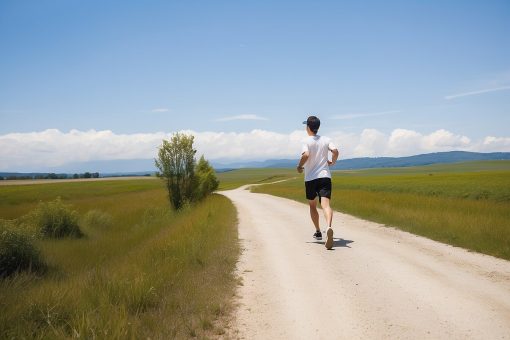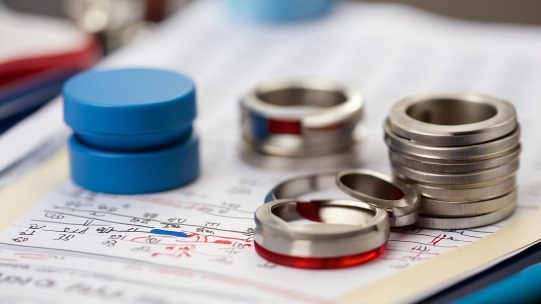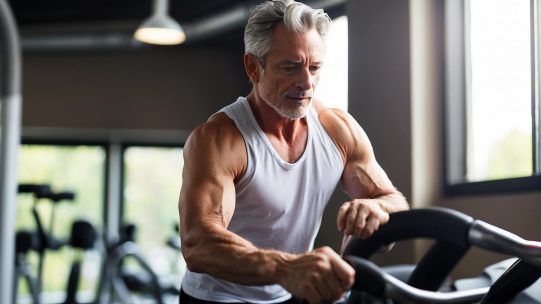
Exercise is good for the heart, blood pressure, joints and muscles, as well as improving mood.
If these benefits of walking, running and swimming aren’t enough, they may also improve erectile function in men who are sedentary, overweight, have atherosclerosis and high blood pressure.
This is the conclusion of a new study in which scientists analyzed about 2,000 scientific papers published between 2006 and 2016.
It’s important for men to be informed about this information. For example, many men with high blood pressure and cardiovascular disease also suffer from erectile dysfunction. Here’s what you can do yourself without going to a psychologist or renegotiating your relationship with your partner.
Exercise improves erectile function, whether you want to prevent erectile dysfunction or it has just started.
The more exercise the better
The conclusions are based on tests with moderate and high intensity exercise. Moderate intensity is the intensity of brisk walking. High-intensity exercise is anything that involves sweating and shortness of breath, and it can be anything you like to do, such as biking to work or cross-country skiing.
According to a new review, the more exercise you do, the more benefits you get from it. And the more you load yourself up, the more efficient you become.
I don’t see any limits. There may not be much of a good thing,” says Gerbild.
“It may even encourage doctors to do more of the exercises they already recommend for patients with poorly functioning blood vessels, such as those with obesity, atherosclerosis and heart disease.
Some men may be more motivated knowing they can improve their erectile function, sexual health and quality of life than when they are told they can live longer,” Gerbild says.
Not only a longer life but also better sex
The findings surprised other scientists who called the study thorough and evidence-based, clearly showing that physical activity improves erectile dysfunction in men.
According to Prof. Bente Klarlund Pedersen of the University of Copenhagen and Ellids Christensen, a physician and researcher at the Sexology Clinic in Copenhagen, these findings are supported by known mechanisms that may explain the link to erectile dysfunction :
- Exercise increases the elasticity of blood vessels, allowing more blood to flow to the genitals.
- Exercise stimulates the production of nitric oxide in the body, causing blood vessels to dilate. This is essentially what the over-the-counter drug Viagra does.
With that in mind, Pedersen, head of the TrygFondens Center for Active Health at Rigshospitalet in Denmark, says the findings should lead to new treatments for impotence.
Exercise should be prescribed as a treatment
We knew that exercise could reduce the risk of erectile dysfunction, but it became clear that it could also be a cure. After all, if you improve blood flow in the blood vessels, you treat the very cause of erectile dysfunction. So I think this study has a lot of potential to lead to a cure,” she says.
Christensen continues.
“I believe we should be working on the least invasive and healthiest treatments. Now that we know how much exercise improves our health, I think that’s what we should focus on first, rather than medical treatments,” says Christensen.
So how much should you exercise to see an effect?
The question is how much exercise is necessary for it to be effective. This is the question scientists asked themselves when they began to review the published literature.
Prof. Gelbild and his colleagues recommend exercising for 40 minutes four times a week for six months.
However, Pedersen and Christensen doubt that such precise conclusions can be drawn without further research. The study shows that intense exercise can help with erectile dysfunction, but whether that means 30, 40 or 50 minutes of exercise three or four times a week is something that should be studied further, they say.
More exercise than official recommendations
Gelbild agrees, but supports this recommendation as a goal for people looking to improve erectile function.
If you exercise a little more than the Danish Health Authority’s recommendation – 30 minutes of exercise on average – we saw the benefits, which is why we decided to shorten that time. But if you want to solve impotence problems or maintain the positive effects, you will need to exercise a bit more,” she says.
Gelbild hopes the new guidelines will alleviate the symptoms of impotence, potentially improving the condition for men suffering from severe erectile dysfunction and possibly eliminating the problem altogether for men with milder problems.
At this stage, Gerbild says, this is still a rough prediction, but it will be refined in future studies. For example, future studies should look at whether exercise is particularly beneficial for certain groups of patients and whether the stage of the disease affects the benefit of exercise, she says. For now, the findings apply only to men with erectile dysfunction in general.
Outside help needed to maintain fitness routine
The study also concludes that exercise should be supervised. This is because all of the men in the study received professional help to adapt therapeutic exercise to daily life and to maintain motivation.
In addition, there is no reason to assume that patients continue with therapeutic exercise only on the recommendation of a physician.
They may seek the help of a physical therapist who understands their disease or take up team sports such as soccer.
In either case, it is important to remember that exercise can improve erectile dysfunction as long as the patient continues to engage in therapeutic exercise. If you go back to old habits, the benefits achieved through regular exercise will disappear and you risk further erectile dysfunction, says Gerbild.









